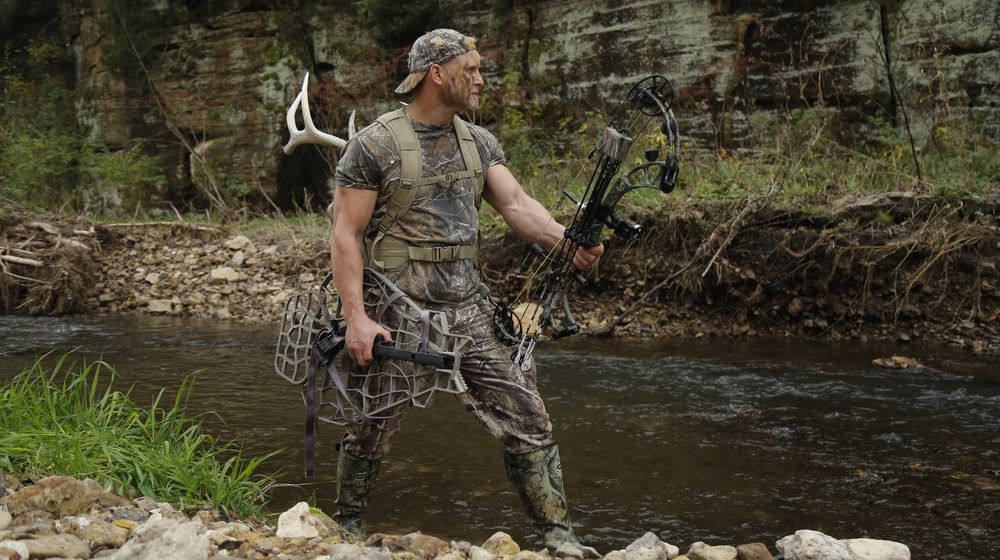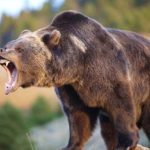Hunting
Camouflage Concealment: 7 Ways To Stay Hidden
Camouflage concealment goes way beyond just wearing tiger stripes or digital camo for hunting. There are techniques that can help you maximize your stealth capabilities and your stalking prowess out on the field. So, as a hunter, how do you stay hidden?
Published
8 years agoon
By
Jeffrey Buck
Camouflage concealment is one of nature’s most astounding gifts to the apex predators. Predators like the Great White Shark and Bengal Tigers make use of camouflage concealment to stalk their prey effectively. A Great White Shark’s back is colored the same way as the ocean surface, so you’ll never know it was around till it’s too late. A Bengal Tiger can hide in the brushes thanks to its stripes. But humans are not blessed with these gifts, so we’re left to devise of means and methods to blend in with the environment.
Camouflage Concealment: 7 Ways To Stay Hidden
Camouflage concealment goes way beyond just wearing tiger stripes or digital camo for hunting. There are techniques that can help you maximize your stealth capabilities and your stalking prowess out on the field. A Bengal Tiger doesn’t know it has stripes, but it knows well enough to hide in the brushes to stalk its prey. A Great White Shark will only make its presence known when it’s ready to strike. So, as a hunter, how do you stay hidden?
Avoid patterns and shapes
We’ve come from wearing patterned suits to wearing the actual environment. The human eyes are exceptionally adept at picking out patterns, colors, and shapes, but animal eyes don’t. Irregular shapes and patterns are almost invisible to an animal’s eyes. Hunting outfits, like a ghillie suit, can provide you with an irregular shape and is patterned almost similarly to bushes, tall grasses, and shrubbery.
Minimize your movement and noise
Let’s face it. Hunting in the woods can be noisy. You’ll never know when you’ll be stepping on a twig or a bundle of dried leaves. While the noise may seem inconspicuous to us, it’s already a cause for alarm for animals with sensitive hearing, like deer and birds. Understanding animal senses can greatly improve your camouflage concealment tactics.
Kill your scent
Scent killers are available in your local outdoor stores to hide your musk and should be in every deer hunter’s arsenal. Some animals, like the deer, have exceptional sense of smell, so if you’re branding your aftershave on a hunt, there’s no doubt that the prey will disappear faster than you can even spot them.
Remove your shine
Your skin is susceptible to light reflection, or what hunters call “shine”. This is why hunters use face paint, masks, mud, charcoal, or boot polish over their skin, particularly their faces. Hunters will want to break up the face so other eyes on it will not recognize it. Your gun and scope will also need to be concealed, as metal objects will reflect light. This is why some hunters paint their rifles in matte colors. You can also wrap your weapons in dark cloth for night hunting.
The environment is your ally. Fit in.
There’s a time and place for everything, and this is applicable to hunting as well. Camouflage concealment requires you to fit in, so it’s pointless to hunt in snowy terrain wearing botched desert camouflaged patterns. You’ll stand out like weed on concrete. Camouflage suits are designed for specific purposes and seasons. Brushlands will require you to get suits with brown patterns. Marshlands or woodlands will require you to wear suits with black and green patterns. And of course, a snowy terrain requires you to wear white patterns.
Use the terrain to your advantage
The wilderness offers a lot of hiding space. You just need to know how to maximize them. This is why companies developed deer hunting blinds and tree stands so you can use what’s around you to conceal yourself. Maximizing terrain will also allow you to take advantage of the other techniques above, like minimizing your noise and visibility. A tree stand can conceal hunters from up above as they stalk their prey.
Hide in secluded areas
To maximize your camouflage concealment, you need to be in an area where you are perfectly hidden. An open field does not guarantee complete invisibility and you are also at risk for ending up in a predator or another hunter’s sight. Secluded areas, like shrubbery and bushes, can keep you well hidden because they can keep light away. Low light will make your concealment even more effective and your pattern indiscernible.
Check out this cool video from BlackScoutSurvival as he discusses about Escape and Evasion with Camouflage and Concealment
Camouflage concealment requires you to do more than just picking out camouflage patterns. An effective hunter knows how to maximize his environment, understands the prey and its senses, and how to practically become invisible to the naked eye. Like my brother-in-law told me, “if you want to use camo effectively, you need to know about BLISS. BLISS stands for Blend, (keep a) Low silhouette, (keep a) Irregular shape, (stay) Small, and (keep to) Secluded areas”.
Meanwhile, check out more articles about camo and hunting clothes right here.
Did you like this article? Maybe these will interest you too:
9 Completely Unforgettable Facts About Whitetail Deer Hunters Should Know
Todd Orr: The Remarkable Man Who Survived a Bear Attack
What Are The Best Hunting Cameras For Self-Filming?
Featured image via mossyoak
You may like

How To Build A Debris Hut

Ironman Triathlon Podcast: What You Need To Know As An Aspiring Ironman

Awesome Family Camping Tips For Beginners

Hiking Safety Tips: What To Do When You Have Knee Pain On Trail? [PODCAST]

How To Craft Sharp Stone Tools To Survive The Great Outdoors

Mountain Bikers, Why You Don’t Want to Ride Like a Pro!

Hiking Boot Accessories
The Handgun Safety Test For Beginners
These Hunting Shotguns Are The Best Bang For Your Buck
11 Types of Guns That Will Keep You Alive On Doomsday
Best ATV Tires – The Top 6 Lightest Mud Tires
Arizona Hunting Laws and Regulations

The Top 5 Hunting Guns You’ll Ever Need For A Wilderness Walk-out

Hunting And Conservation Discussion | Call Of The Outdoors Podcast [LISTEN]
The Handgun Safety Test For Beginners
These Hunting Shotguns Are The Best Bang For Your Buck
11 Types of Guns That Will Keep You Alive On Doomsday
Best ATV Tires – The Top 6 Lightest Mud Tires
Arizona Hunting Laws and Regulations

The Top 5 Hunting Guns You’ll Ever Need For A Wilderness Walk-out









